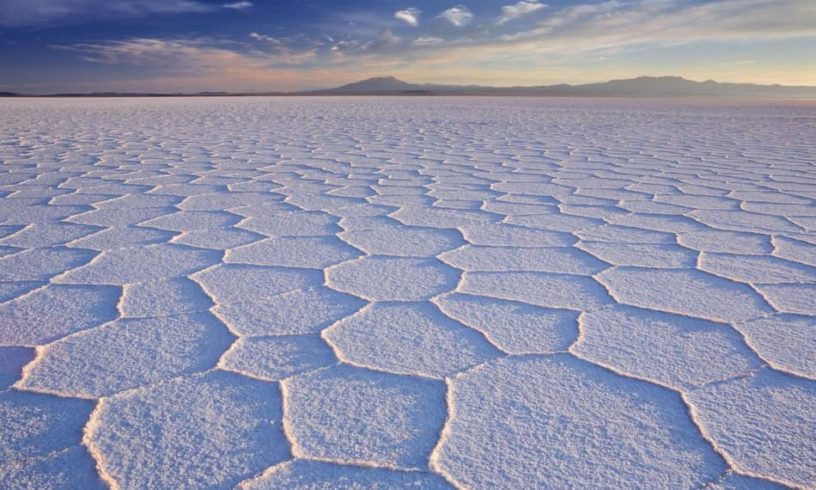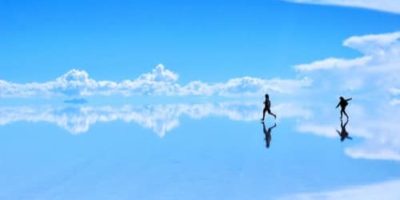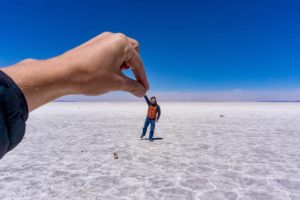Salar De Uyuni is the largest salt desert in the world, a white spot easily distinguishable in space flights, film scenario of one of the most famous sagas of the cinema (Star Wars, chapter VIII – The last Jedi), the largest world reserve of lithium, exotic diversity of flora and fauna in one of the highest places on the planet.
Yes, all that and more is the Salar de Uyuni.
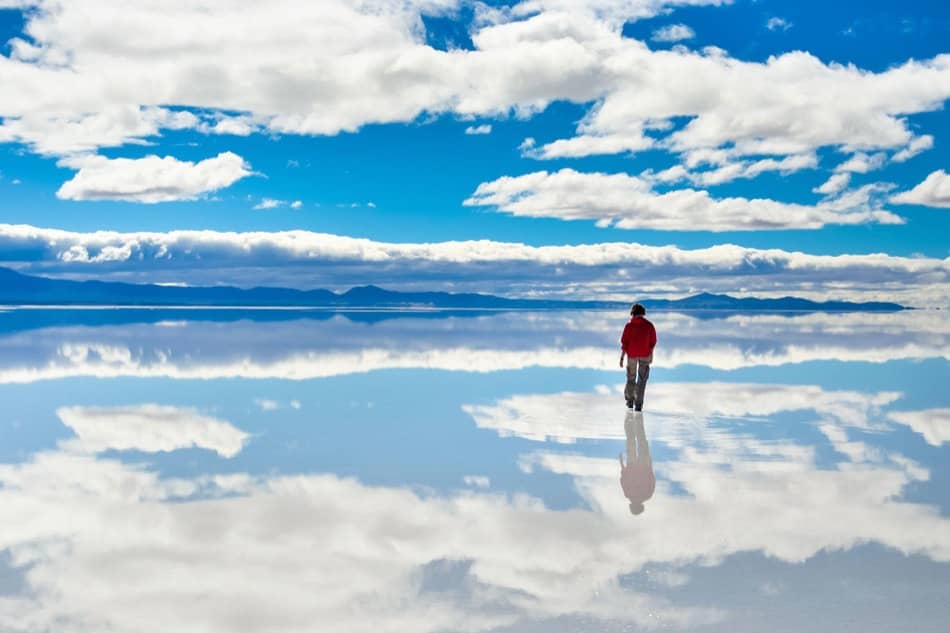
The Salar de Uyuni is located in the Bolivian highlands, towards the southwest of the country, in the department of Potosi, at an altitude of 3653 meters above sea level (masl). In general, the Salar de Uyuni is very flat, with a surface elevation variation of less than 1 meter.
The Salar de Uyuni is approximately 10583 km2 in size.
Contents
Depth
The Salar de Uyuni is made up of 11 layers of salt that vary in thickness between 2 and 20m; the crust on the surface is 10m thick. It is generally said to be 120m deep in the central part. However, in a later study carried out with the aim of collecting sediment samples and studying the history of the climate in South America, 220.6m were drilled below the surface in the center of the salt flat, the deepest drilling on record. The total depth of the salt flat is still unknown.
The Polygons
During the dry season, the surface of the salar is covered with polygons and small salt grooves. This very particular texture is totally erased during the rainy season, when the salt flats are flooded. At the end of this season, under the combined effect of sun and wind, the water evaporates quickly and a smooth white surface appears. With desiccation, this layer compacts and fractures, spreading over kilometers. Then, the fissure networks become more and more dense and the drying polygons begin to develop again.
Salt
The amount of salt contained is estimated at 64 million tons. This is the result of the millenary evaporation of two great salt lakes that existed, one 40,000 years ago, Lake Minchin -of about 36,000 square kilometers-, and the other 12,000 years ago, when the glacial melt formed the waters of Lake Tauka.
Seasonally and after thousands of years, both bodies of water dried up due to the lack of tributaries and the heat from the volcanic activity characteristic of the area.
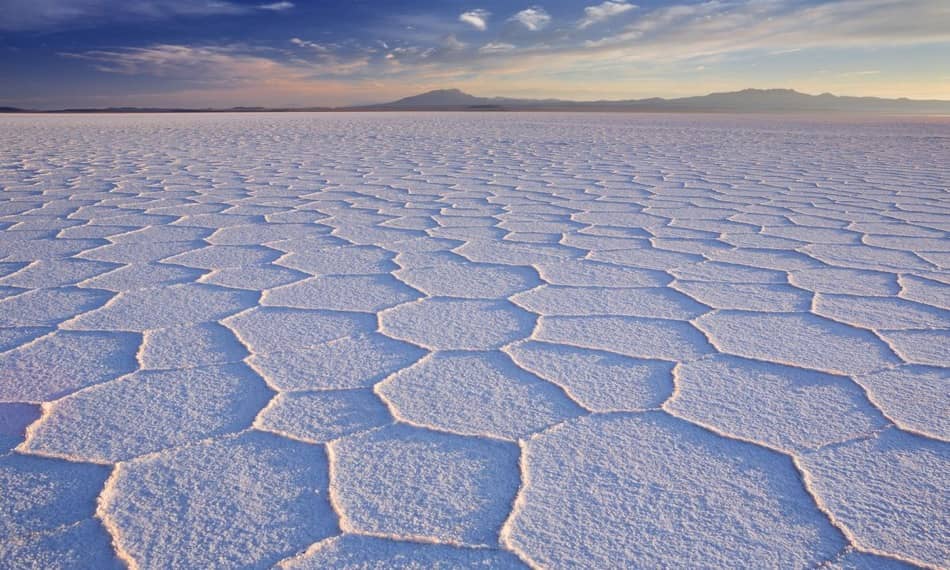
Another factor that influenced the evaporation of these waters has to do with the atmospheric temperature, so that the colder it is, the longer the water freezes and the less it evaporates; but the saltier the water, the lower its freezing temperature and the less time the water will remain frozen.
Such evaporation not only resulted in huge amounts of salt but also in the concentration of different minerals such as potassium, boron, magnesium and the already mentioned lithium.
Minerals
Of these minerals, the one that has acquired the greatest importance in recent years is lithium, due to its use in the manufacture of batteries, computers, cell phones, televisions and various technological devices.
Although it is an abundant resource in nature, it is easier and cheaper to extract it from brine, such as that of the Salar de Uyuni, where only the first crust holds 8.9 million tons.
However, recent exploratory work carried out by COMIBOL’s (Corporación Minera de Bolivia) Evaporative Resources Management estimates a total of 100 million tons of lithium in the salt flats. This is the largest reserve, with more than 50% of the world total.
The Salar de Uyuni is one of the points of the so-called “Lithium Triangle”, which also includes the Salar del Hombre Muerto in Argentina and the Salar de Atacama in Chile.
Another abundant mineral is potassium, which together with nitrogen and phosphorus are the three main and important elements for the life of all plants. It is therefore the great fertilizer that we now need for our farmland. Only in the surface crust there is an estimated reserve of 194 million tons of potassium.
There is also Boron, the element that cleans everything, used in toothpaste soaps, creams for women and sometimes for men; and borax used to clean metals and machinery, also in great demand all over the world.
And this is how, with landscapes that make the hiker feel as if he were walking on clouds, its infinite immensity, its particular history and its mineral wealth, the Salar de Uyuni positions its presence at an international level.
Film Locations
The Salar de Uyuni has been the scene of many film productions. The most recent and famous was the Star Wars film “The Last Jedi” in which the salt flat represented the planet Crait.
Crait in the movie, is a mineral salt planet located in a remote sector of the Outer Rim Territories of the galaxy. Covered with a layer of white salt on its red soil, the planet was once home to an outpost of the Rebel Alliance during their early rebellion against the Galactic Empire. Many years later, the uninhabited planet became a refuge for the Leia Organa Resistance, which resulted in a battle between the Resistance and the First Order on the planet’s surface.
Its unique fauna was adapted to the environment, highlighting the Vulptex, white foxes with crystalline fur.
Here are some other posts about Salar de Uyuni:
What To Pack For Salar de Uyuni
Things To Do in Uyuni Town
How Long to Spend in Uyuni
Swimming In Laguna Colorada
When Is Salar De Uyuni Covered With Water?
